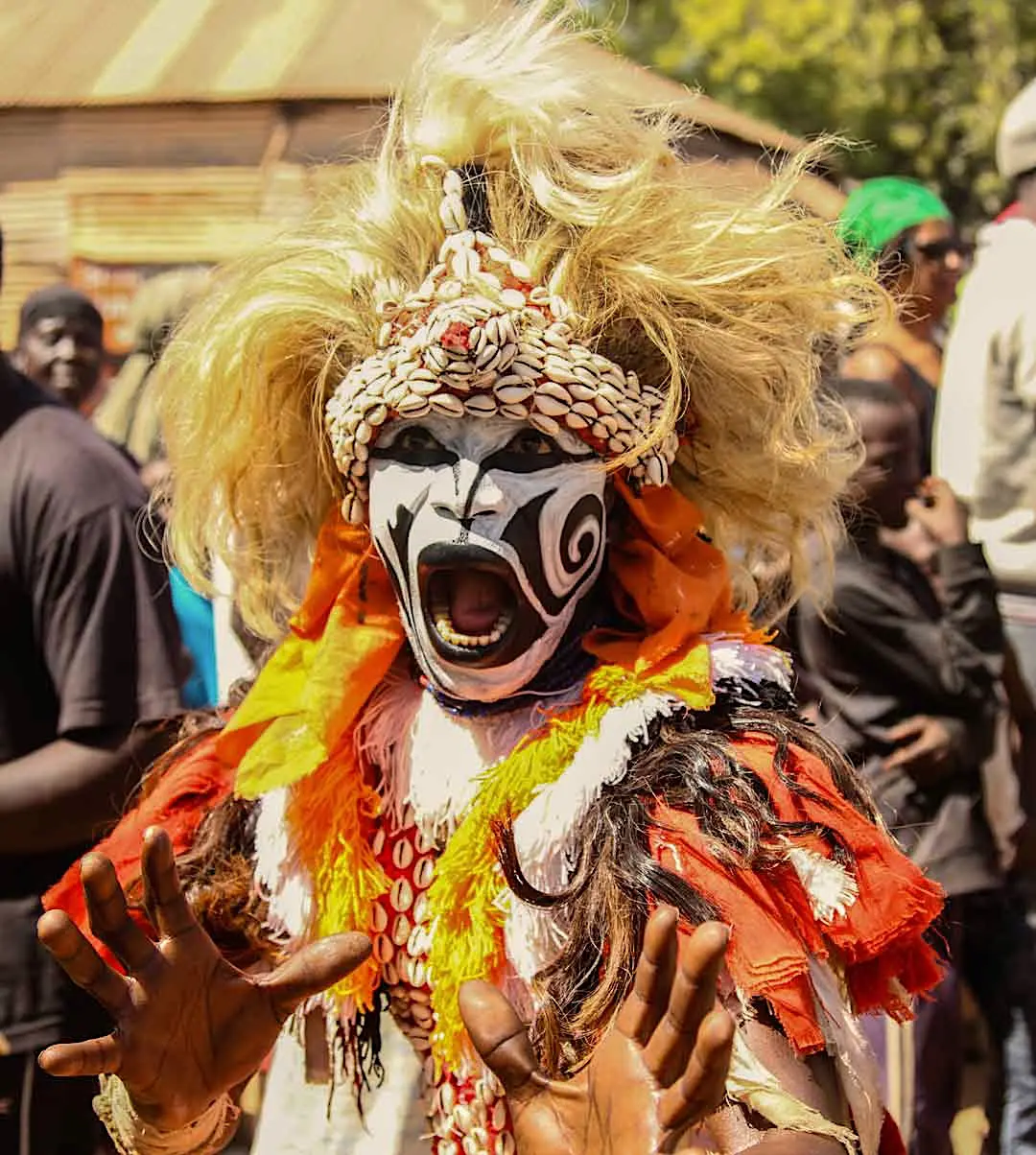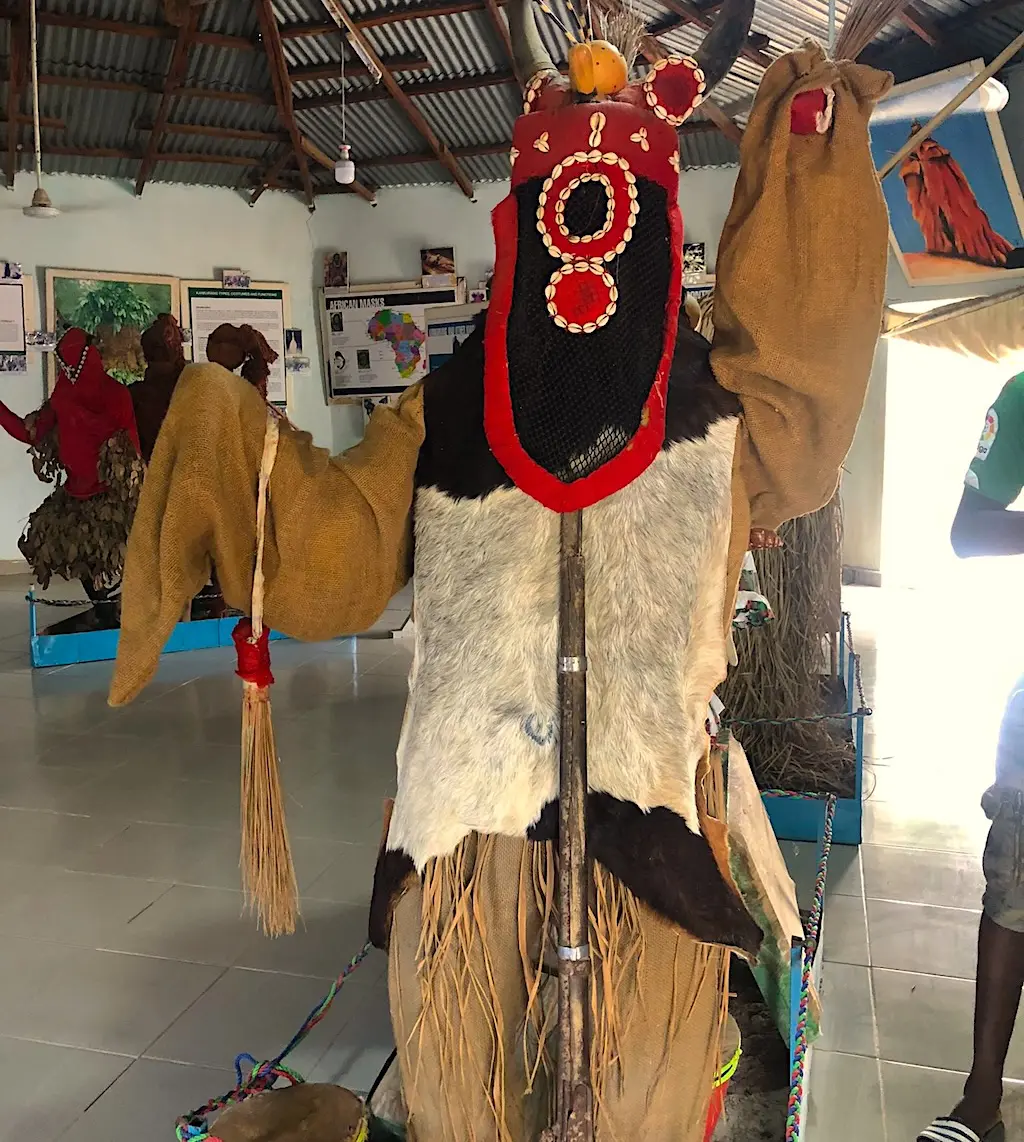The Kankurang, a figure shrouded in mystique and tradition, emerges as a cardinal persona in the cultural tapestry of The Gambia, a West African nation ensconced within the sinuous embrace of the Gambia River. The Kankurang masquerade is central to both the initiation rituals for young men and the communal life of the Mandinka people, one of the numerous ethnic groups in the region.
Origins and Symbolism
Tracing its roots back to the ancient Mandinka empire that once dominated parts of West Africa, the Kankurang is deeply interwoven with the cultural and spiritual fabric of Gambian society. This entity is not merely a symbol but a bulwark that encapsulates the virtues of courage, discipline, and communal solidarity.
The masquerade is integral to ‘fambondi’, the initiation ceremony marking the transition of boys into manhood. This rite of passage is traditionally kept secret from women and children and involves teaching the young initiates the responsibilities, skills, and knowledge required to become respected members of society. The Kankuran, often a senior male in the community who is veiled in a costume made from leaves, bark, and red fibres, plays a pivotal role in these ceremonies, which may last several weeks to months.
The Kankurang Masquerade Costume
Every aspect of the Kankurang’s costume is symbolic. The mask, typically made from wood and covered in either animal skin or cloth, hides the identity of the wearer, making the Kankuran an impersonal enforcer of tradition and discipline. The red colouration commonly found in the fibres of the costume is emblematic of power and the transformative nature of fire.

Janjanbureh festival, picture courtesy of Ninki Nanka Trail

Kankurang Museum
Adorned from head to toe to obscure the human form, the costume is both an object of awe and a reminder of the spirits’ presence in the material world. Bells and other noisemakers often attached to the ensemble serve to alert the community of the Kankurang’s approach, as well as to drive away evil spirits and reinforce the power and mystery surrounding this character.
The Role of the Kankuran
During initiation ceremonies, the Kankurang is both a protector and a disciplinarian. He ensures the initiates adhere to the strict codes of the rite, and his presence instills a sense of respect and obedience. He also symbolizes the ancestors and acts as a mediator between the spiritual and physical realms. He chastises, guides, and imparts wisdom to the initiates as they grapple with the challenges of the transition before them.
Apart from initiation rites, he may also appear during festivals and communal events, dancing to the rhythms of the drum, communicating messages from the ancestors, promoting fertility, and bonding the community through shared cultural experiences.
Cultural Impact and Preservation
The enduring legacy of the Kankurang attests to the resilience and vitality of Gambian traditions. Often, the elders are the custodians of these cultural practices and pass down the secrets of the Kankuran from generation to generation, upholding the sanctity and authenticity of the masquerade.
However, the onslaught of modernization and globalization poses a potential threat to the maintenance of such rich traditional manifestations. The Gambia, aware of its cultural heritage, has taken steps to preserve the legacy by integrating the practice into state-sponsored cultural festivals and tourism, which helps to educate both locals and foreigners about the significance of these customs.
The youth play a crucial part in the continuity of these traditions. By their participation in initiation ceremonies and respect for the practices of their forebears, they ensure that the threads of history remain unbroken.
Conclusion
The Kankurang stands as a sentinel of the past, a spiritual mentor guiding the youths of Gambia through the proverbial wilderness of adolescence. In embracing the duality of the human experience, where the visible and invisible worlds coexist, it transcends the role as a mere masquerade. It becomes a living embodiment of ancestral strength, community cohesion, and cultural perpetuity.
As The Gambia navigates the crosscurrents of the 21st century, the Kankurang remains a symbol of continuity, embodying the unwavering spirit of a people deeply connected to their cultural roots, even as they cast their gaze forward to the future. Through the mystical dance of this venerated entity, one can behold the pulsating heart of Gambian society, beating to the ancient rhythms of a time-honored tradition that refuses to be forgotten.
